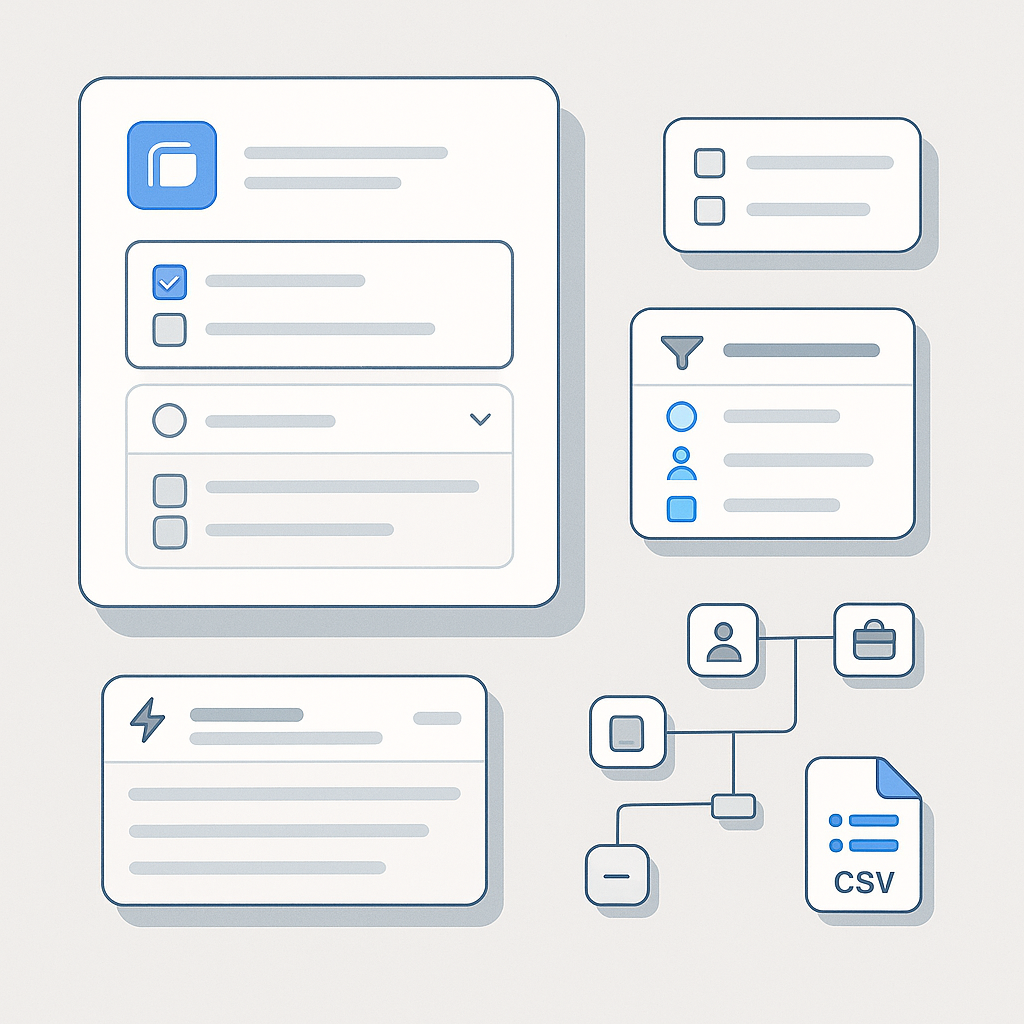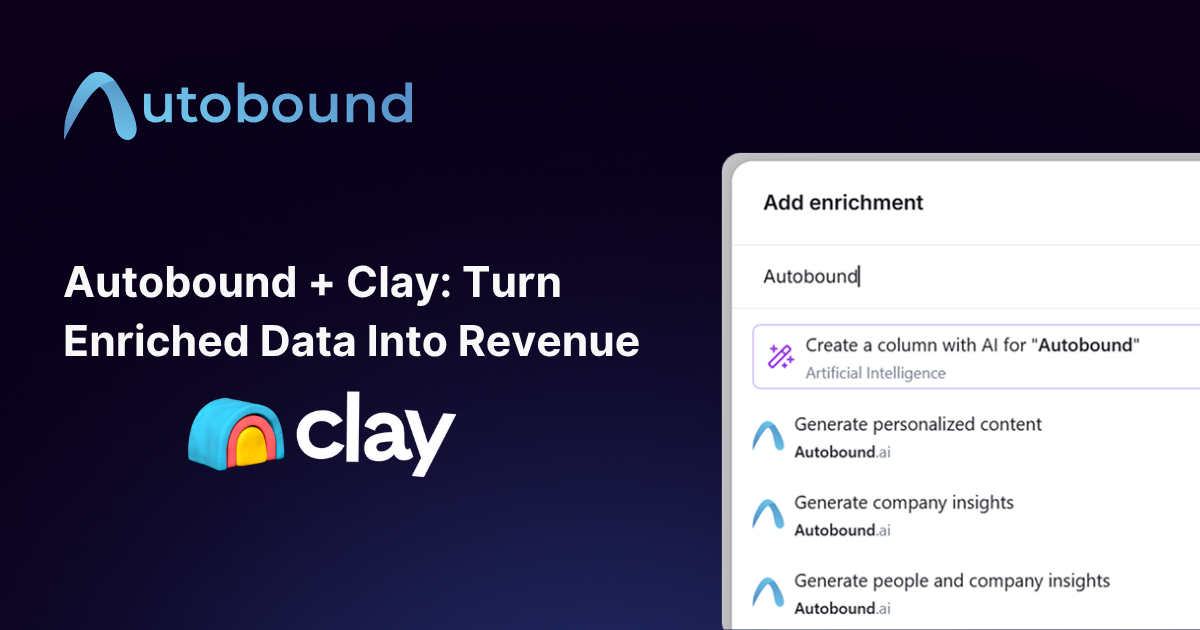Introduction: The High Cost of Customer Support Inefficiency
Picture this: a high-value customer, ready to sign that next big deal, suddenly goes cold. They're not unhappy with your product, but their seemingly simple support ticket has spiraled into a days-long saga of unanswered emails and frustrating phone calls. This, my friend, is the high cost of inefficient customer support, and it's a more common tale than many B2B companies would like to admit. In an era where customer experience (CX) reigns supreme, neglecting those who keep your lights on can be a fatal misstep. But for astute sales and marketing teams, this widespread struggle presents a golden opportunity. This guide is your treasure map, leading you through the treacherous terrain of identifying, targeting, and ultimately engaging companies desperate for a customer support revolution. We'll turn their frustration into a resounding win for your business, because let's face it, everyone loves a happy ending (especially your bottom line).
Identifying the Telltale Signs: Recognizing Companies with Customer Support Challenges
While some companies might publicly air their customer support grievances, many more suffer in silence, their pain points hidden beneath a veneer of normalcy. Your mission, should you choose to accept it, is to become a Sherlock Holmes of customer support woes, adept at deciphering the often-subtle clues that reveal a company in distress.
Data Signals & Digital Footprints: Where Frustration Leaves Its Mark
- Website Analysis: A company's website is their digital storefront, and a neglected one speaks volumes. If their idea of helpful resources is a dusty FAQ section last updated in 2019 and a lonely "Contact Us" page buried deeper than Blackbeard's treasure, consider that a red flag waving in the digital breeze. Look for outdated information, difficult-to-find contact details, a distinct lack of live chat options, and page loading speeds that would make a snail impatient – these are all telltale signs that customer experience might not be their top priority.
- Social Media Sentiment: Ah, social media, where customer frustration finds its voice (and often, its megaphone). Monitoring platforms like Twitter and LinkedIn for complaints, negative reviews, or exasperated comments directed at your target company can be incredibly revealing. Imagine scrolling through a prospect's Twitter feed only to find a recent eruption of complaints about their buggy software integration. That, my friend, is not just market research; it's a sales opportunity knocking. Pro Tip: Consider using social listening tools to streamline this process and gain deeper insights into customer sentiment.
- Review Platforms: Websites like G2, Capterra, and Trustpilot are goldmines of unfiltered customer feedback. Think of them as the Yelp of the B2B world, where you can get the inside scoop on a company's customer service strengths (or lack thereof). Don't just focus on the overall star ratings; dive into the written reviews to uncover specific pain points and recurring themes. For instance, if you notice multiple customers complaining about a competitor's slow response times or unhelpful support agents, there's a good chance your target companies in the same industry might be facing similar challenges. As desk365.io points out, "A staggering 89% of customers are willing to leave a positive review after a company takes action on their feedback," highlighting the significance of addressing customer concerns.
- News and Industry Publications: Negative press coverage is rarely a good look for any company, but when it comes to customer service failures, it can be a glaring neon sign. Keep an eye out for news articles, blog posts, or industry reports that mention data breaches, lawsuits, or public complaints related to a company's customer support practices. These incidents often point to deeper systemic issues and a disregard for customer well-being, creating the perfect opening for your solutions.
Behavioral Signals: Actions Speak Louder Than Words
- High Employee Churn: Remember that old saying, "Happy employees make for happy customers"? Well, the inverse is also true. If you notice a company consistently posting job openings for customer support roles on platforms like LinkedIn, it could be a sign of high employee churn within their support department. This constant need to fill positions suggests underlying issues like burnout, poor management, or a lack of growth opportunities – all of which can negatively impact the customer experience.
- Lack of Engagement: In today's hyper-connected world, an inactive online presence can be just as telling as a negative one. If a company rarely engages with their followers on social media, ignores comments and messages, or seems generally unresponsive online, it might indicate a broader neglect of their customer base. After all, if they're not willing to put in the effort to connect with customers online, what does that say about their commitment to providing exceptional support?
Pro Tip: To streamline your lead qualification process, consider creating a simple checklist or scoring system based on these telltale signs. This will help you prioritize companies that are most likely to benefit from your solutions and focus your efforts where they'll have the greatest impact.
From Insights to Action: Tailoring Your Sales and Marketing Approach
Now that you've mastered the art of identifying companies wrestling with customer support inefficiencies, it's time to translate those insights into a tailored sales and marketing strategy that sings. Remember, you're not just selling a product or service; you're offering a lifeline, a way for these companies to escape the clutches of customer support mediocrity and emerge stronger, happier, and more customer-centric than ever before.
Sales Outreach Strategies: Personalization Is Key
- Hyper-Personalized Cold Emails: In the vast digital ocean of B2B inboxes, where an estimated 126 trillion emails are vying for attention according to Fox Business, generic outreach is about as effective as a message in a bottle. To truly stand out, you need to craft emails that speak directly to a company's specific support challenges, referencing the data points you've meticulously gathered like a detective piecing together a case. Instead of a bland, "We help companies improve their customer support," try something like, "I noticed your recent tweet about the challenges of integrating your CRM system with your customer support platform. We specialize in streamlining those integrations to create a smoother, more efficient experience for both your agents and your customers." See the difference? It's like offering someone a glass of ice-cold lemonade on a sweltering day – you're addressing their specific need at the precise moment they need it most.
- Value-Driven Sales Calls: Congratulations, your hyper-personalized email has worked its magic, and you've landed a coveted sales call. Now's your chance to shine, but remember, this isn't about launching into a generic product pitch. Instead, lead with empathy and a genuine understanding of their pain points. Begin by acknowledging their challenges and validating their frustrations. For example, you could say, "We understand that long wait times and inconsistent support can be incredibly frustrating for your customers, not to mention damaging to your brand reputation. We've helped companies like yours reduce resolution times by 20% and boost customer satisfaction scores by 15% by implementing our solution." By focusing on the value you bring to the table and demonstrating a deep understanding of their specific needs, you'll position yourself as a trusted advisor rather than just another vendor trying to make a sale.
Marketing Strategies: Content Is King, and Context Is Queen
- Targeted Content Marketing: Content marketing is the art of providing valuable, relevant information that gently guides your target audience towards a solution – ideally, yours. But to truly capture the attention of companies grappling with customer support woes, you need to create content that speaks directly to their pain points. Think laser-focused blog posts, insightful case studies, in-depth white papers, or even interactive quizzes that address the specific challenges they're facing. For instance, if you're targeting SaaS companies struggling with customer onboarding, a blog post titled "5 Proven Strategies to Transform Your SaaS Onboarding Process from Frustrating to Fantastic" is far more likely to resonate than a generic "Customer Support Tips" article. Remember, it's all about providing the right information at the right time, demonstrating your expertise and building trust along the way.
- Account-Based Marketing (ABM) Campaigns: Account-based marketing, or ABM, is like that friend who always remembers your birthday and gets you the perfect gift. It's about focusing your marketing efforts on a select group of high-value accounts, tailoring your messaging and outreach to resonate with their specific needs and challenges. In the context of targeting companies with customer support inefficiencies, this could involve creating personalized landing pages that speak directly to their pain points, sending thoughtful direct mail pieces that highlight the benefits of your solution, or running targeted ads on platforms like LinkedIn that feature case studies of similar companies you've helped. The key is to make your target accounts feel seen, heard, and understood, demonstrating that you've done your homework and are invested in their success.
- Webinars and Events: Webinars and events are excellent opportunities to position yourself as a thought leader in the customer support space and engage with potential customers in a more interactive setting. When crafting your webinar content, focus on the most pressing challenges faced by companies with inefficient support processes. For example, you could host a webinar titled "The High Cost of Customer Support Inefficiency: How to Stop Leaving Money on the Table and Start Creating Raving Fans." During the webinar, be sure to share real-world examples, actionable strategies, and compelling case studies that demonstrate the transformative power of effective customer support.
Sales and Marketing Alignment: A Key Ingredient for Success
Imagine a symphony orchestra where the woodwinds are playing a jaunty tune while the brass section blasts a somber dirge. It wouldn't be very harmonious, would it? The same principle applies to sales and marketing alignment. When these two departments are working in perfect harmony, sharing insights, coordinating efforts, and speaking with a unified voice, the results can be magical.
Shared Data and Insights: One Source of Truth
In the world of data-driven decision-making, knowledge is power, and shared knowledge is even more potent. Ensure that both your sales and marketing teams have access to the same treasure trove of customer support pain points and data points you've painstakingly collected. This shared understanding will fuel more targeted campaigns, more persuasive outreach, and ultimately, more closed deals.
Co-Created Content: Speaking with One Voice
Remember those laser-focused blog posts, insightful case studies, and compelling webinars we discussed earlier? Imagine the impact if your sales and marketing teams collaborated on creating this content, ensuring it aligns with both your outreach efforts and your overall marketing strategy. For example, Marketing could create a case study highlighting how your solution helped a company reduce customer churn by 50%, while Sales could use this same case study as a leave-behind after a meeting or as a compelling piece of content to share during a follow-up email.
Streamlined Communication: Breaking Down Silos
Silos are the enemy of alignment. To foster a truly collaborative environment, implement a process for seamless communication and feedback between your sales and marketing teams. Regular meetings, shared dashboards, and open lines of communication will ensure everyone is on the same page, working towards the same goals, and celebrating each other's successes.
Measuring Your Impact: Tracking the Right Metrics
You've put in the work, honed your strategy, and aligned your teams – now it's time to see if your efforts are paying off. But before you pop the champagne, it's crucial to measure your impact and determine if you're truly moving the needle.
Key Performance Indicators (KPIs): The Numbers Tell the Story
- Conversion Rates: Are you converting more targeted companies into leads and customers compared to your average conversion rates? If so, it's a good sign that your efforts are resonating with companies facing customer support challenges.
- Sales Cycle Length: Are you closing deals faster with companies that have evident customer support pain points? This could indicate that these companies are more eager to solve their support issues and make a decision, leading to a shorter sales cycle.
- Customer Lifetime Value (CLTV): Are the customers you're acquiring through this targeted approach more likely to stick around and spend more over time? If so, it suggests that solving their support challenges has led to increased loyalty and higher CLTV.
Data-Driven Optimization: Constant Improvement Is Key
Remember, the journey to customer support excellence is an ongoing process, not a destination. Use the insights gleaned from your KPIs to continuously refine your targeting, messaging, and outreach strategies. The more you understand what works, the more effective your efforts will become, and the more companies you can help transform their customer support from a liability into a competitive advantage.
Conclusion: Turning Customer Support Frustration into Opportunity
In the ever-evolving landscape of B2B, where customer experience reigns supreme, helping companies improve their support processes is not just good business; it's a strategic imperative. By mastering the art of identifying, understanding, and addressing customer support pain points, you can unlock new opportunities, drive revenue, and build lasting relationships with companies eager for a better way. So, embrace the challenge, refine your approach, and watch your business thrive in the age of customer-centricity.
About Autobound
Autobound's leading AI-powered platform delivers 350+ unique insights for go-to-market teams from financial filings, social media activity, 35 news events, competitor trends, job changes and more. Trusted by 7,000+ companies including TechTarget and validated by 220+ 5-star G2 reviews, we're unlocking hyper-personalization at scale, with native integrations for Salesloft, Outreach, and more. Leverage our developer-friendly API, try our Chrome extension, try our platform free, or contact our team to eliminate guesswork and drive measurable growth →
Built with love in San Francisco, CA




